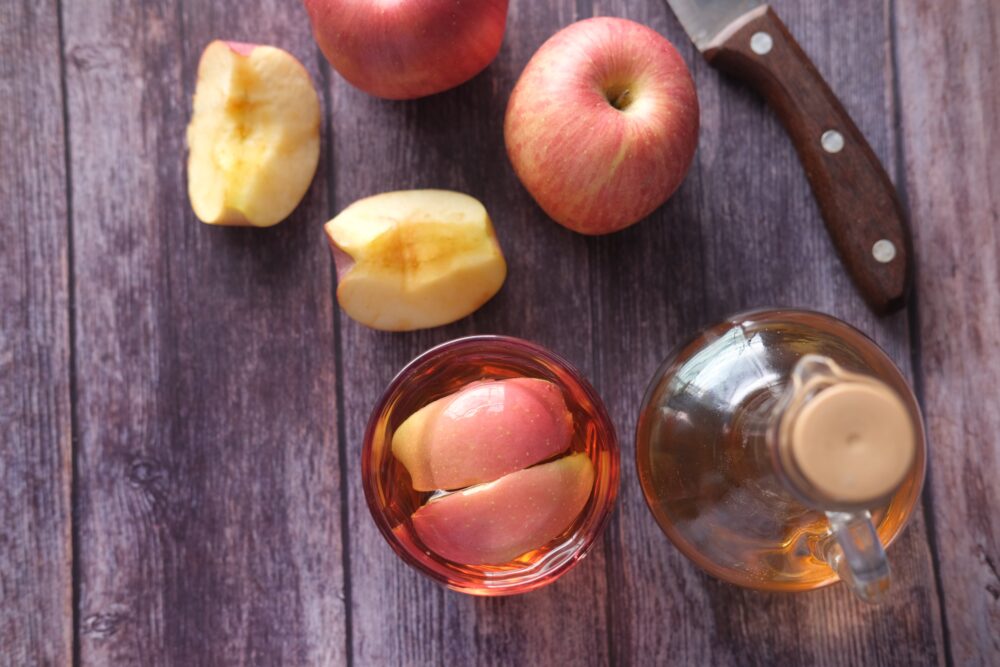Types of Vinegar and Their Culinary Uses

There are several varieties of vinegar, each with unique tastes and best uses in the kitchen. Some of the most common are listed below.
- Distilled White Vinegar: This is the sharpest and cleanest vinegar of all varieties, and doesn’t come with a ton of flavor, meaning it pairs well with just about everything. White vinegar is a top pick for pickling. Typically made from corn or wheat (via ethanol), try to get an organic white vinegar variety if you want to steer clear of glyphosate.
- Apple Cider Vinegar: This variety is often described as tasting like hard apple cider. It pairs well in dishes that already incorporate fruit like apples or pears. You can also mix apple cider vinegar with non-dairy milk (usually one tbsp of vinegar plus one cup of milk) to make a plant-based buttermilk for cooking.
- Red Wine Vinegar: Made from red wine, this variety has a tangy, fruity taste. Red wine vinegar works well in marinades, salad dressings, and Italian dishes.
- White Wine Vinegar: White white vinegar tends to have a less robust taste than red wine vinegar. Its best uses include light sauces, marinades, and more delicate salad dressings.
- Balsamic Vinegar: Made from Trebbiano (red) or Spergola (white) grapes grown in specific regions of Italy, balsamic vinegar has a dark color and a caramelized flavor that makes it a good addition to desserts as well as fresh fruits and grilled vegetables. Some balsamic vinegars are very sweet, so check the sugar content if you don’t want to unintentionally add sugar to your diet.
- Malt Vinegar: This is a less common, dark vinegar made from ale. It has a toasty, nutty flavor that lends well to homemade fries, roasted potatoes, or to make a unique salad dressing.
- Rice Vinegar: This variety is distinctly sweeter than other vinegars, and is often used in Asian cuisine, especially sweet and sour dishes. Rice vinegar also has uses in marinades, sushi rice, or pickling.
It’s fun trying a few different vinegars and seeing how you like to use them most. Or pull out a variety you’ve kept on the shelf and experiment with its flavor. When possible, buy organic vinegar to minimize exposure to pesticides and GMOs.
( Excerpt taken from The Food Revolution Network)
